Artist Somnath Bothe was born in 1982 in Paithan in Maharashtra and is currently based in Pune. He obtained a Diploma in Art from Mumbai University (Abhinav Kala Mahavidyalaya, Pune).

His journey in the world of art began with landscapes and portraits. He started thinking about sensitivity and the intent of his paintings… As his entire childhood was spent in a village, a very close relationship with the village developed. “A deep rooted respect for ‘nature’ and ‘humility’ is the inspiration for my paintings”, says Somnath. Later education and living in city life created new sensitivities and understandings… the blend of these different environments and cultures indirectly flowed in his paintings… His paintings are colorful, vibrant and nostalgic at times, sheer conversational pieces. Subdued and quiet by nature is the language he wants to speak through his artworks.
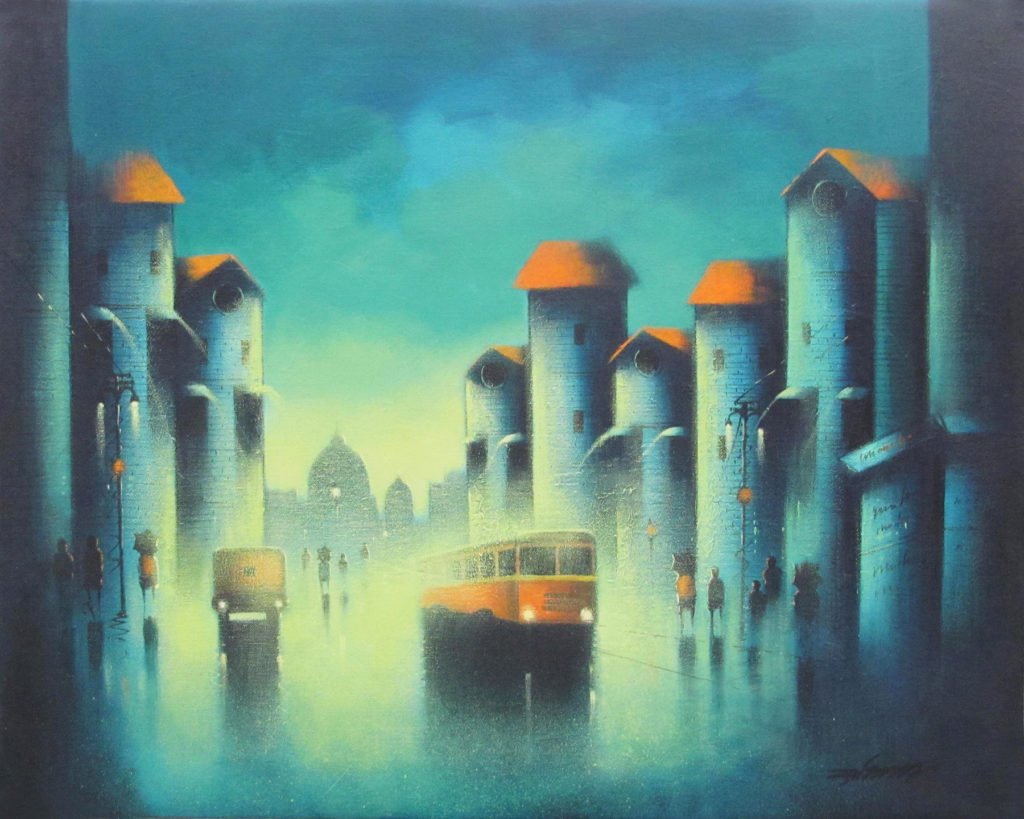
What’s integral to the work of an artist?
What is most integral to the work of an artist is a curiosity to explore and research into a wider methodology. I focus and determination in their work is integral to the world of an artist.
What role does the artist have in society?
As we live in a global village, we are somehow all connected via some form of social media. I hope my role as an artist is to inspire, connect, and collaborate! Artists have been crucial from the very beginning of our existence. From prehistoric cave paintings to frescos around the world, to scientific drawings, to the avant-garde movements, artists have contributed to expanding human evolution from many different perspectives. This expansion, much like the universe, is still going on and artists still play an important role. I see myself as part of a community whose work as a global force contributes to this human growth. There is a crescent complexity in the way the art world evolves and the myriad agents who orbit around it are intimately interlaced with artists and their production. Although artists typically work alone in their studios, they are part of a much larger community and they play a much larger role than one might anticipate.
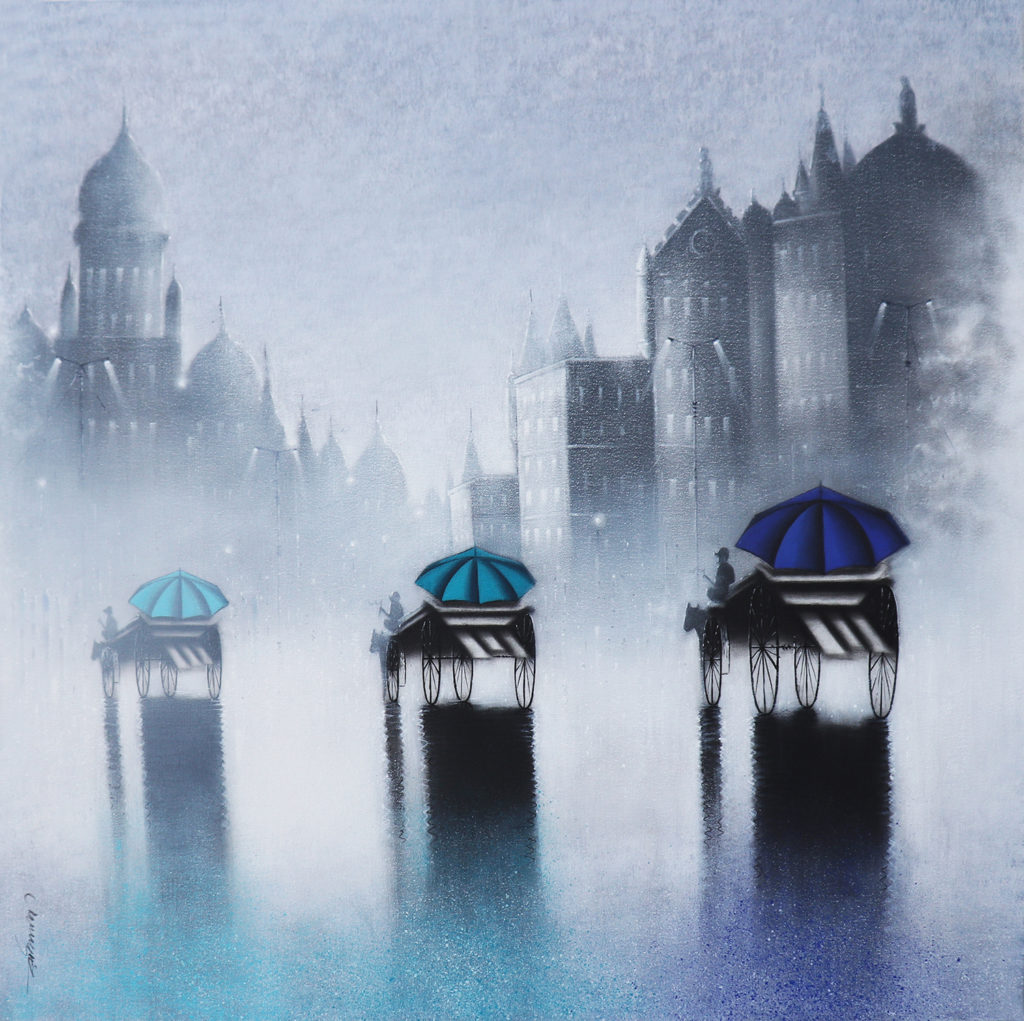
What art do you most identify with?
I have my own way of showing my creations. My colour schemes are modern and flashy but this is intentional, to remind us of the importance of historical places. The fusion of rainy season and historical places in cities and villages constitute the subjects of my paintings. Painting is not just a technique; it has become a medium of expression for me.
My creations represent a beautiful blend of varied geographies and cultures. The passion for cherishing humanity, love and affection, fusion of village and city life are the subjects of my works and human figures find a central place in most of my artworks.
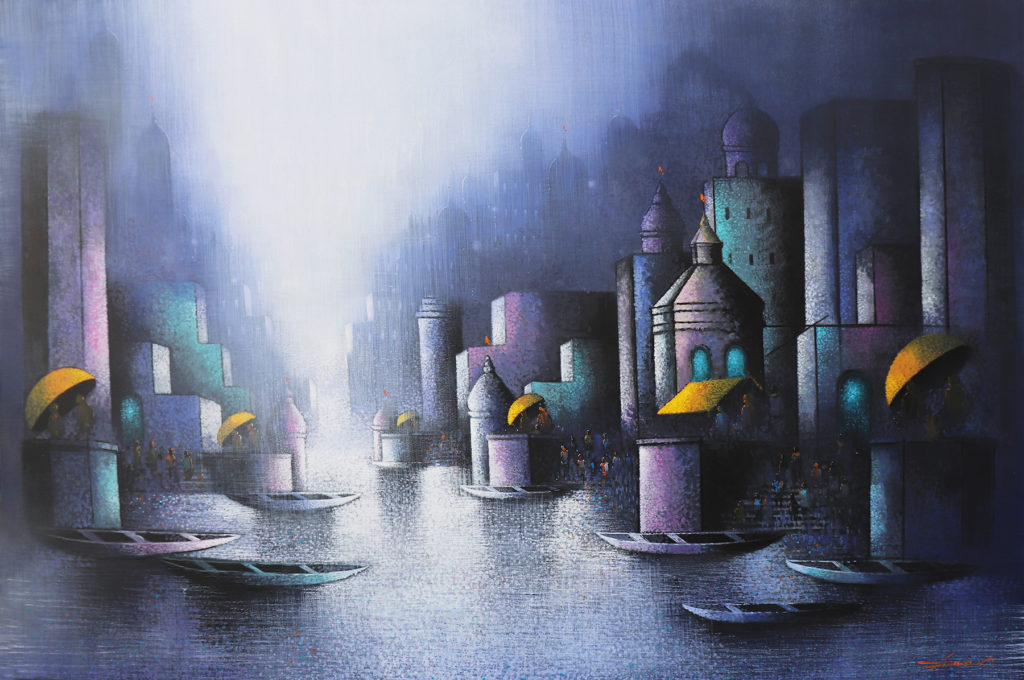
What themes do you pursue?
The monsoons, because the rains always bring a smile on everyone’s face. And Indian artists have this beautiful bond with the rains, which they try to portray on their canvases. Some relate it to their childhood days; for some, it connects to life’s struggles. There is an inspiration in every bit of the first shower. Monsoons are nature’s muse that is a call to the creative-the poet with his words, the painter with his canvas and the musician with his notes. Visual art has always stepped in to fill the blanks with colours and canvas.
One of the reasons why monsoon has always been a popular theme among most creative people is because it is an inspiring season…during the monsoon, I feel happy. When I feel happy, all I want to do is paint. Somewhere that also automatically reflects in my works and ensures a blend of imagination and creativity.
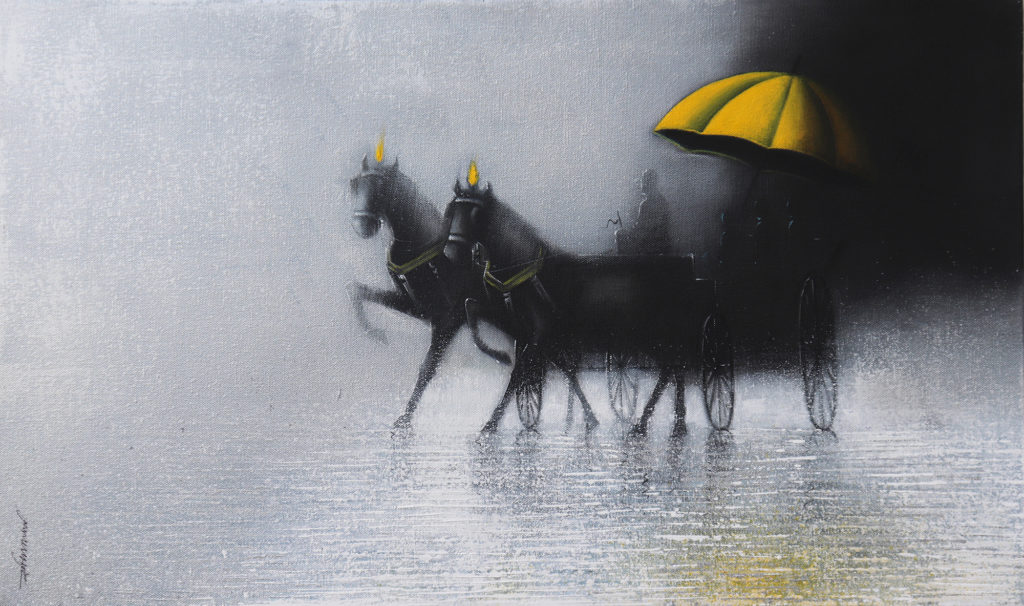
I am a farmer’s son; therefore monsoon has a close connection with me. I believe that monsoon is the best season as we can’t think of our lives without water.
I have depicted the old historical buildings in Pune, Mumbai, Delhi after the rains. It is the positivity of life and energy that flows that matters the most to me. Life doesn’t stop after the rains. Some of my works also touch upon that topic. And with the rain, there is a lot to show – everything is different at different times. After it has rained, before, at night during the monsoon, in the morning… every ‘time’ is different and looks and feels special.
Regardless of the subject, I convert it to include the monsoon. My colour scheme may change, the actual subject may change, but the monsoon is constant!!
I would prefer to experience the rainy season- to go out, feel and observe the winds, the fresh water and smell the wet mud. Such an exercise is essential for art study. One must interpret nature on canvas, not merely represent it.
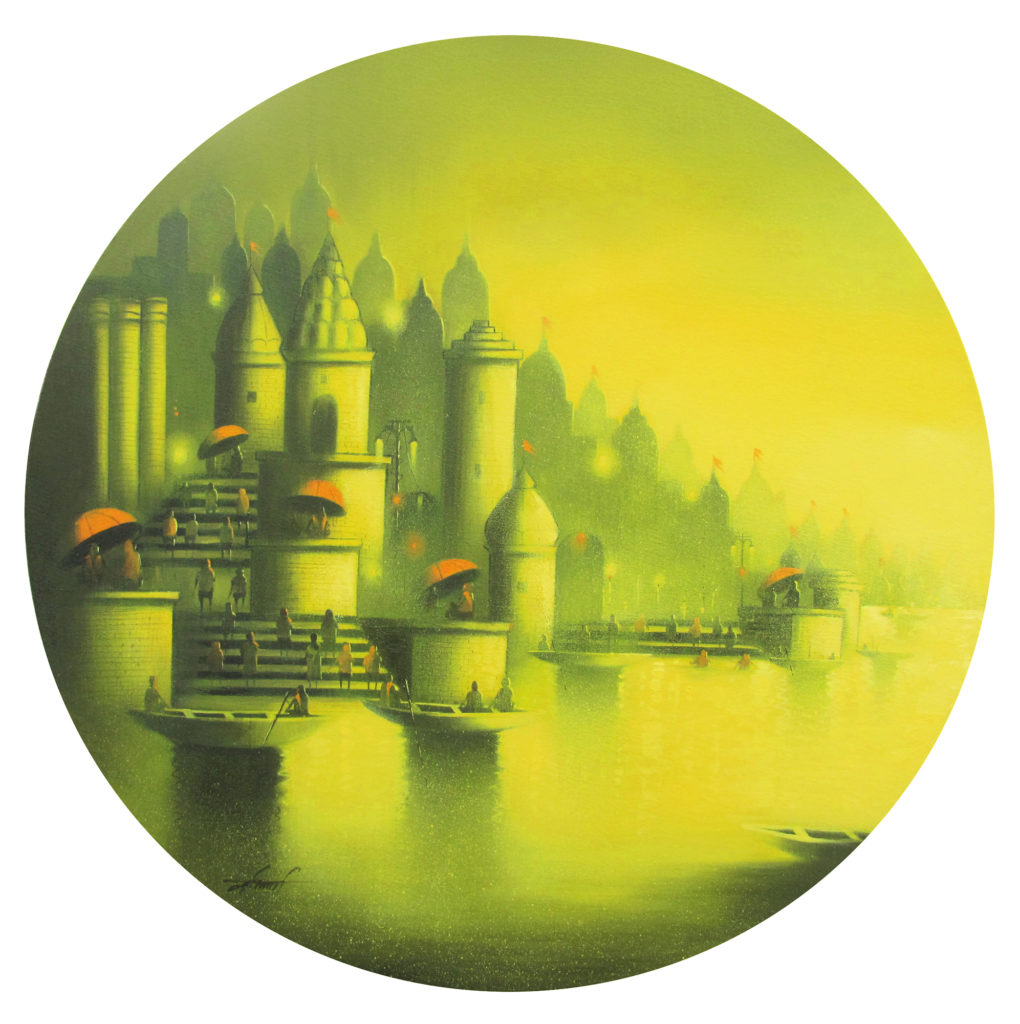
What’s your favourite art work?
I am a fan of so many artworks created by various artists. But my most favourite piece of art is ‘The starry night’ by very famous Dutch Post-Impressionist painter Vincent van Gogh. He painted this in June 1889. The night sky depicted by Van Gogh in the Starry Night painting is brimming with whirling clouds, shining stars and a bright crescent moon….
In Starry Night contoured forms are a means of expression and they are used to convey emotion.
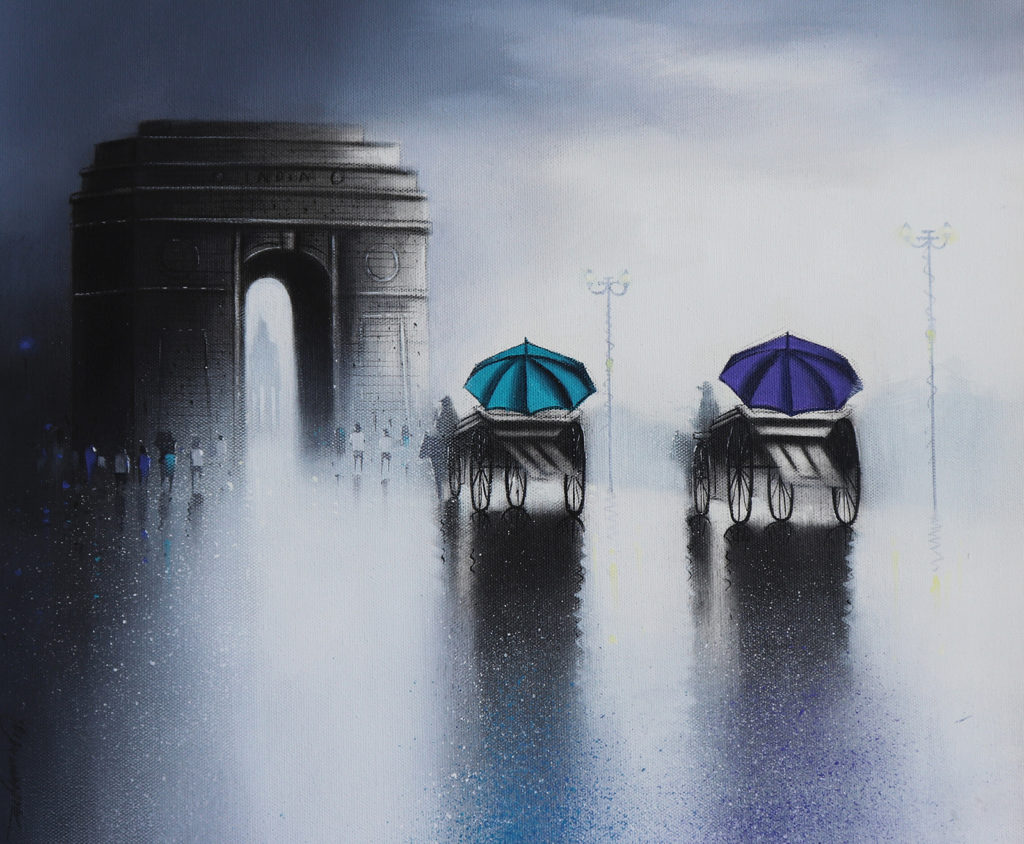
Describe a real-life situation that inspired you?
I used to paint many ancient, cultural and historic old wooden castles (It is called ‘Wada’ in Marathi) of Pune in Maharashtra in my college times. There was a beautiful wooden castle in the centre of city and was a perfect example of Indian architectural science. I created a cityscape of it and the bright light of the street lamp has added eye-catching appearance to the landscape at night. The castle was beaming under the influence of bright street light lamp post of city. I created this painting at around 1 – 1:30 am. I came back to my apartment with utmost satisfaction and dire happiness.
After 8-10 days, I saw a very disturbing and destructive scene passing through that castle location. The wooden castle was no longer there. It was grounded. I was deeply saddened by that. A new concrete cemented building was planned there.
I decided that very moment, this vanishing and eloping ancient cultural material has to be preserved and cultivated through my paintings. I want and dream to forward this social message to upcoming future Art Generations through my paintings. I want to be able to show people that these places exist – that our India is like this, or that this is what old India used to be.
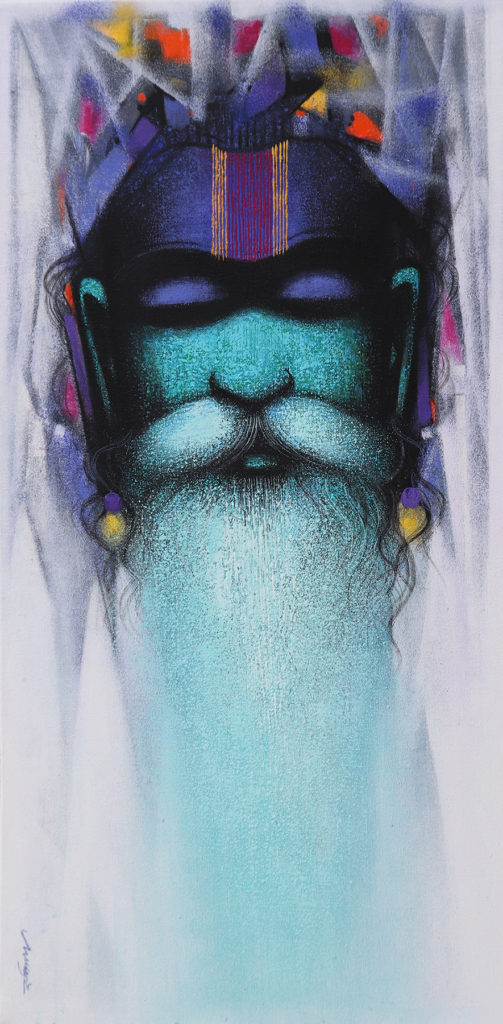
Why art?
Creating art is part of my being, and as natural to me as breathing. Throughout my life I have always had a pencil and brush in my hand. Painting is my favourite way to communicate. I realized that I didn’t really choose to be an artist… it was something I always just did. Art is a way of engaging with the world around me. For me art is a way of living and attempting to make sense of the chaotic events in my life. Art helps me to share thoughts, ideas and visions that may not be able to be articulated any other way. I have a desire to express what I feel. It’s a type of therapy or a form of meditation for me.
What is an artistic outlook on life?
Art is the centre of universe and life. Art is everywhere and everything. It is colour and line and space and visions and illusions and perspective and darkness, shadow and light, bright and dim, aggressive and passive. In fewer words, art is the world we live in, not simply a visual or an oral experience. Art fills the emptiness with matter. Things to look at, things to feel, things that cause emotional reactions, peaceful reactions, aggression, relaxation. One cannot escape art if one is conscious. If we are alive and responsive, we are experiencing the impact of art, in all it’s forms, everywhere, every day.
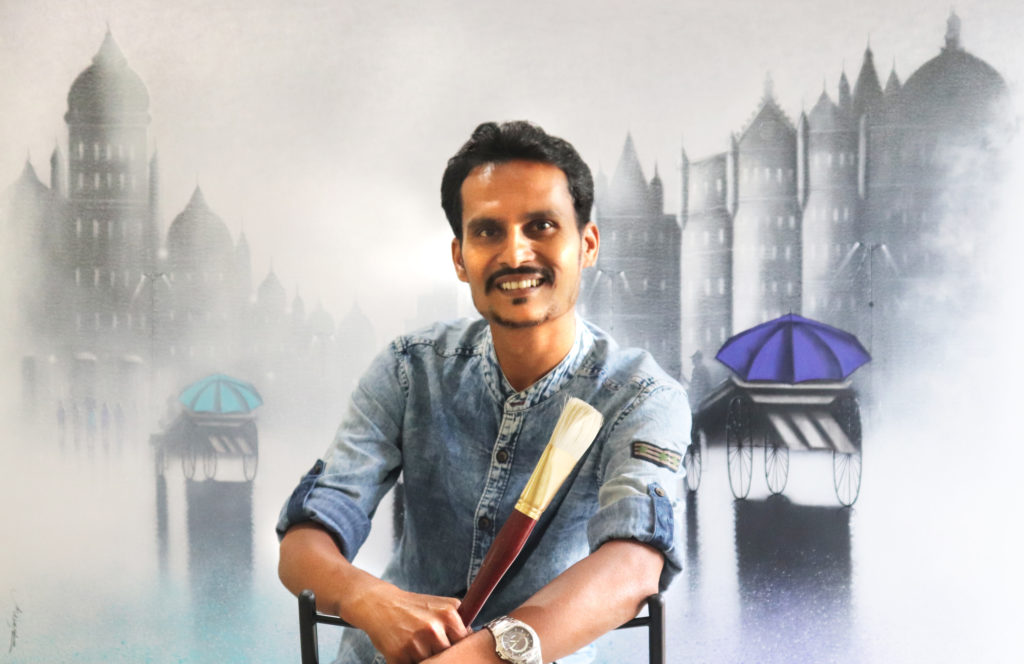
Is the artistic life lonely? What do you do to counteract it?
First of all artists prefer to be alone, they are not lonely. Being alone gives us time and space to think about something new in a creative manner. I love being alone, that’s when creative ideas come to me. It is like meditation for me.
What do you dislike about the art world?
There’s nothing really. The world of art is pretty much awesome. I’m glad every day I’m an artist instead of pretty much anything else I could imagine. There is nothing to hate about being creative. It is a blessing and gives meaning to my life.
What do you dislike about your work?
There’s nothing really that I dislike about my work. Because I make every piece of my work with honesty and passionately. I feel that my paintings immediately connect to the audience’s sensibilities.
What do you like about your work?
My passion for painting started when I realized the intention of paintings was deep, far sighted and could almost make history. In my works, I love taking people to a better place, to remind them of all the beautiful, historic places that this country has. I enjoy creating a melange of cultures and geographic places with a veil of rain on them. Through my compositions I also keep my connection with nature alive and I love sharing this with my audience.
Should art be funded?
Of course!! It is essential that artists are provided with funds so that every young person is allowed the opportunity to participate and express themselves. It is the only source of artist’s livelihood.
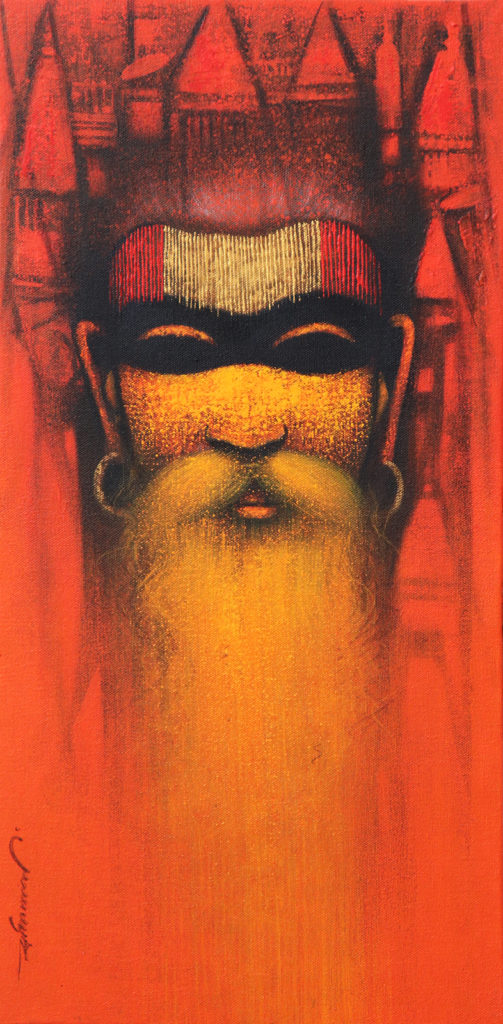
What role does art funding have?
Funding encourages artists to take risks and take the leaps that challenge us to think differently which is exactly what great art should do. I think it’s very important to make sure that the process of funding is transparent and straight.
What is your dream project?
My dream project is developing an art studio cum gallery for upcoming artists in the lap of nature.
Name three artists you’d like to be compared to.
Every artist has his own path. I have my own unique approach to my creations. So I can’t be compared with anyone. But there are few artists who inspired me such as JMW Turner, Van Gogh, Claude Monet.
Favourite or most inspirational place?
My visit to Banaras was truly inspirational. My big muse is the sacred city of Banaras and its atmospheric Ghats. The mystical beauty of the holy river and the throng of humanity on it’s banks come alive in my works. I have an intimate connection with Banaras, a host of legendary figures and mythical characters like Gautam Buddha, Mahavira, Kabir, Tulsi Das, Shankaracharya, Ramanuja and Patanjali. It is a veritable paradise for Hindu pilgrims, who throng the Ghats of the Ganges for spiritual rewards like deliverance from sin and attainment of heavenly bliss and emancipation from the eternal cycle of birth and death.
Professionally, what’s your goal?
As an artist I would like to experiment with different mediums.
Future plans?
I want to keep working ceaselessly as an artist and exhibit my works internationally.


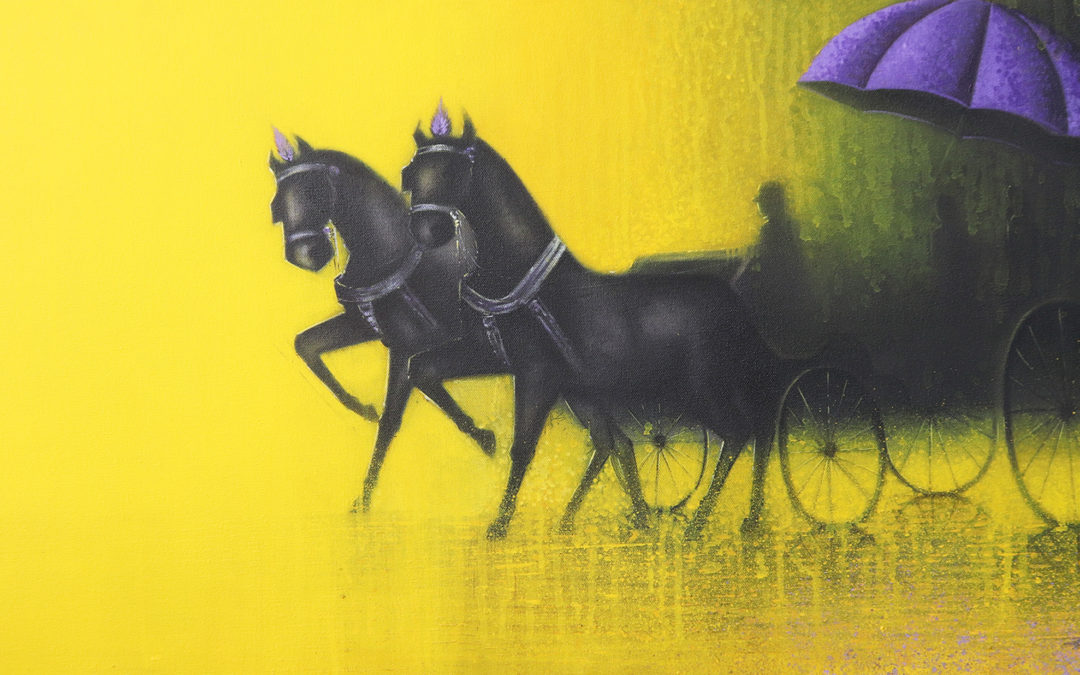

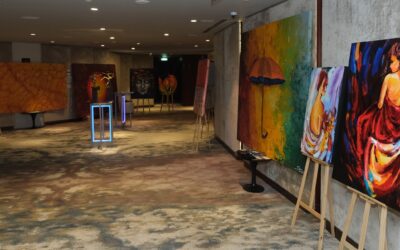
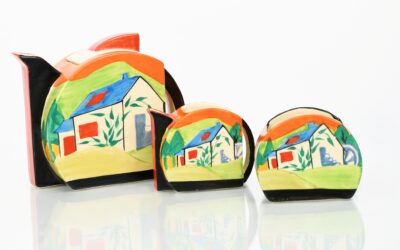
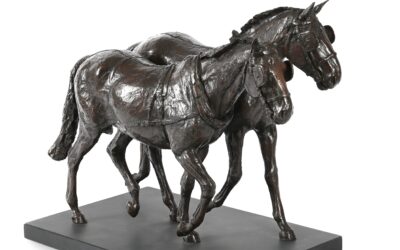
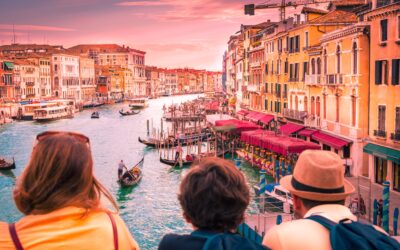
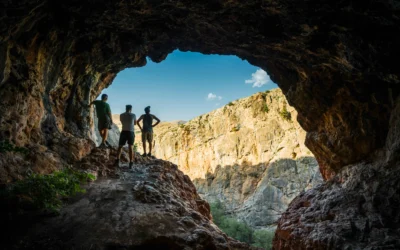
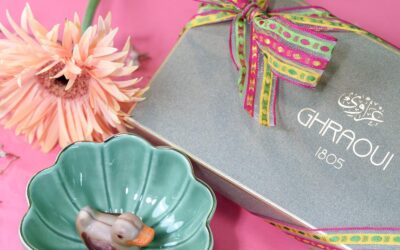
Very much appreciated Somnath Ji.. Your arts are really Incredible…Wish you u lots of best Wishes for Future…